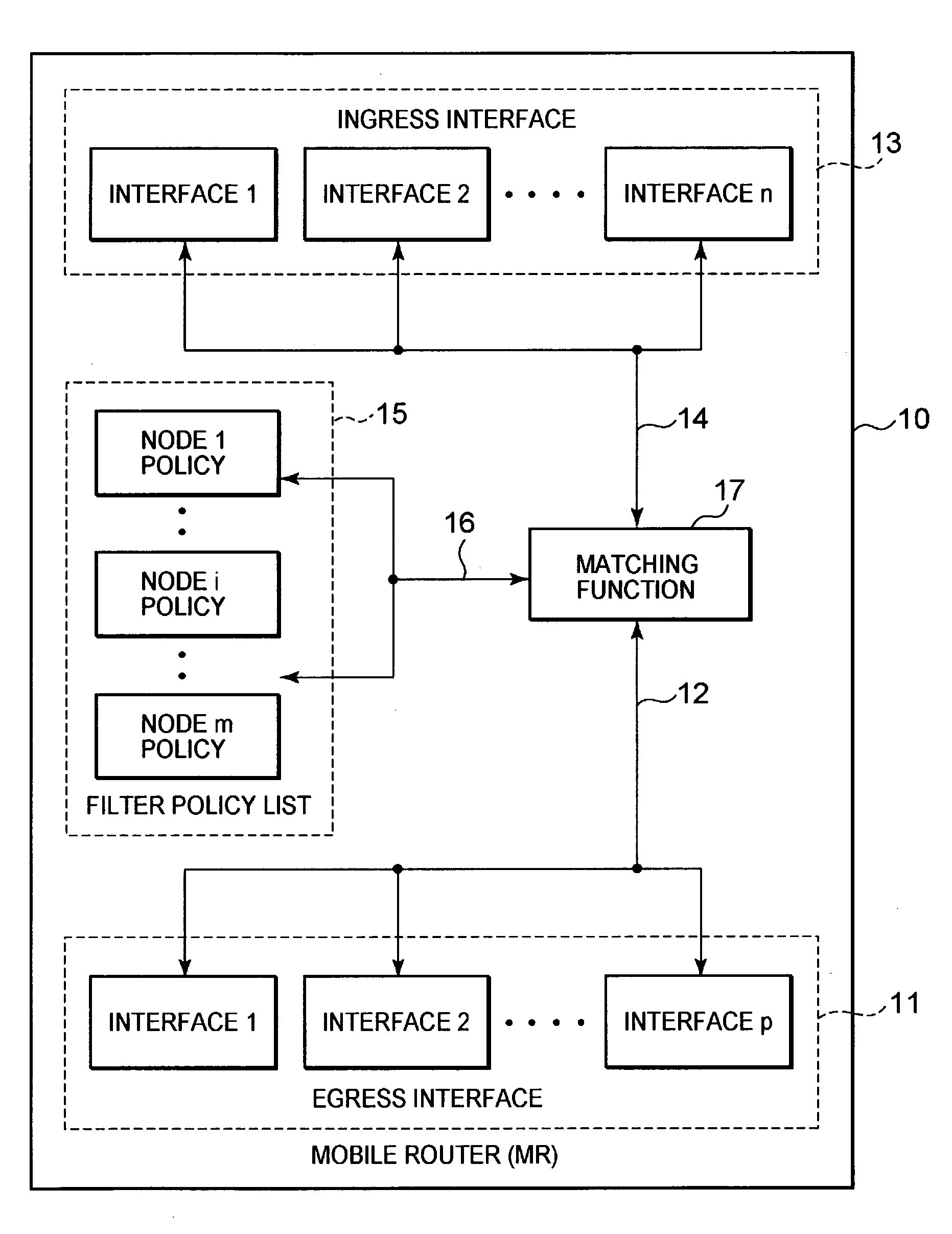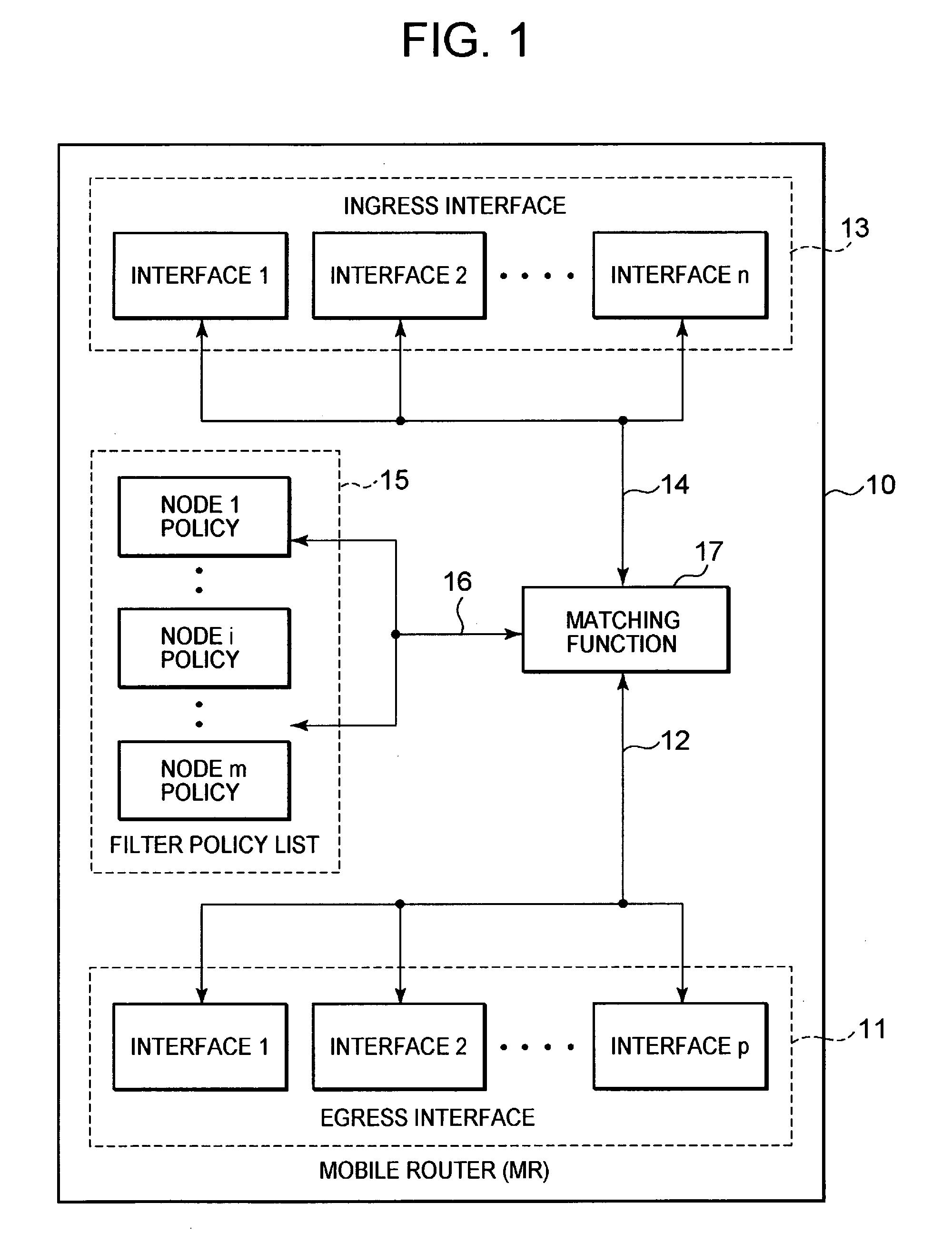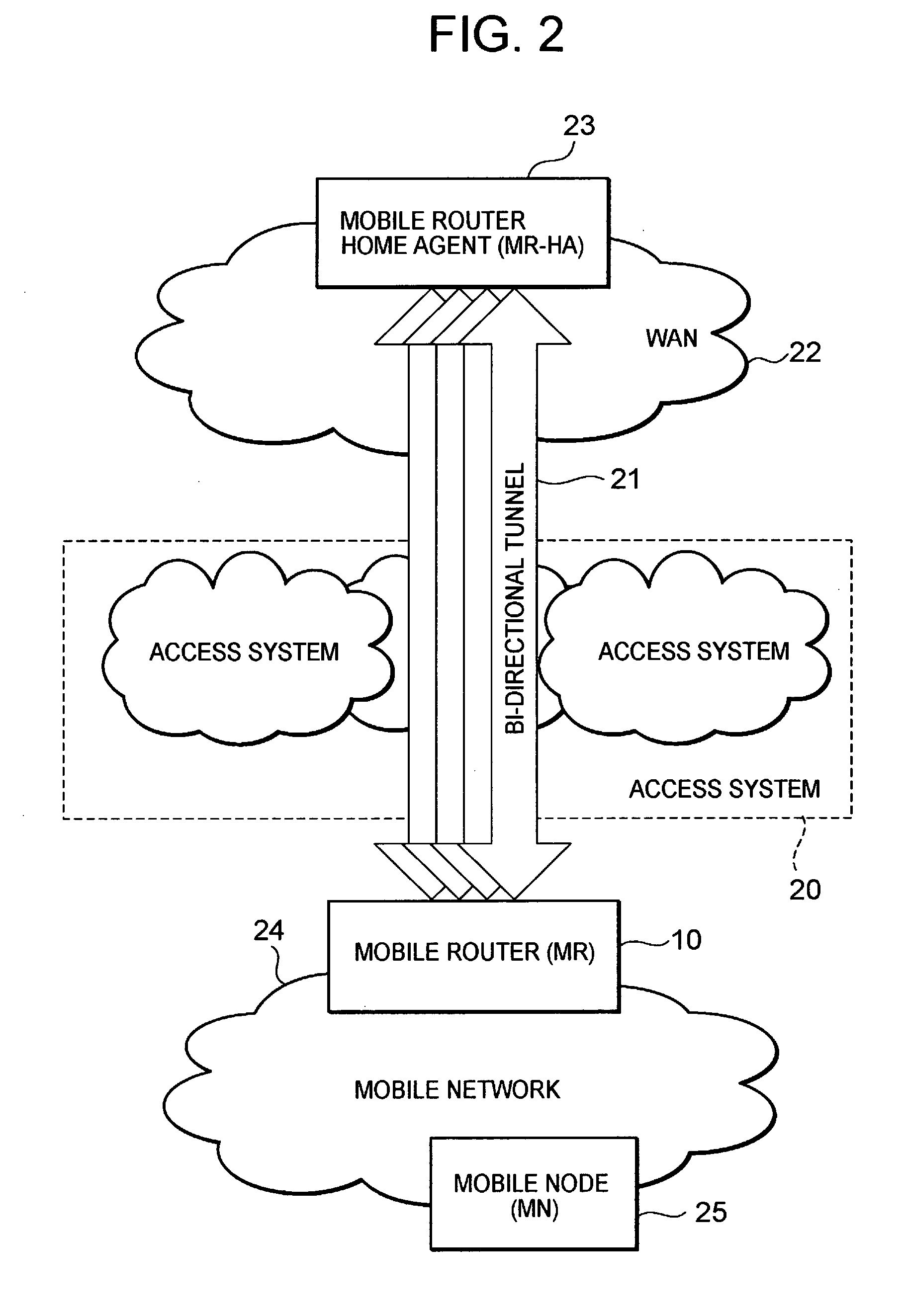Apparatus for flow control
a flow control and apparatus technology, applied in the field of communication techniques in mobile communication networks, can solve the problems of difficulty in applying the concept, nemo still exists, and the inability of the mn to grasp the characteristic (egress characteristic) of the access network
- Summary
- Abstract
- Description
- Claims
- Application Information
AI Technical Summary
Benefits of technology
Problems solved by technology
Method used
Image
Examples
Embodiment Construction
[0089]Embodiments of the present invention will be described hereinbelow with reference to the drawings. First of all, the following terms will be defined for the purpose of a better understanding of the present invention.
[0090]A “multimode node” indicates a node (host or router) having several selectable IPv6 addresses which can be selected. For example, this signifies that this node can receive a plurality of prefixes notified (advertised) on a link connected thereto or that this node has a plurality of selectable interfaces irrespective of whether or not it is connected to the same link.
[0091]A “mobile network prefix (MNP)” signifies an IPv6 prefix delegated to a mobile router and notified (advertised) in a mobile network. The advertisement of one or more mobile network prefixes is feasible within a mobile network.
[0092]A “router advertisement (RA)” signifies a packet to be transmitted periodically or as a response to a router solicitation message by a router for notifying the pr...
PUM
 Login to View More
Login to View More Abstract
Description
Claims
Application Information
 Login to View More
Login to View More - R&D
- Intellectual Property
- Life Sciences
- Materials
- Tech Scout
- Unparalleled Data Quality
- Higher Quality Content
- 60% Fewer Hallucinations
Browse by: Latest US Patents, China's latest patents, Technical Efficacy Thesaurus, Application Domain, Technology Topic, Popular Technical Reports.
© 2025 PatSnap. All rights reserved.Legal|Privacy policy|Modern Slavery Act Transparency Statement|Sitemap|About US| Contact US: help@patsnap.com



